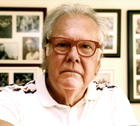NSW Premier Morris Iemma and Treasurer Michael Costa have set themselves on a collision course with the NSW Labor Party and influential trade unions in their headlong quest to part-privatise the state’s electricity industry. Today’s meeting of Unions NSW will call a stopwork protest on 26 February, the opening day of state parliament, to demand the government calls off the sell-off proposal.
Before deciding to ride roughshod over party democracy Iemma and Costa should take a leaf from the book of former treasurer Michael Egan who played a leading role in Labor’s previous privatisation push.
On the eve of the 1997 NSW Labor Party conference to debate the Carr Government’s plan to sell off the power industry, Egan ruled out defying the will of the party.
“It is a matter of principle,” he explained.
“Conference is the supreme body in the party and this is far too big an issue. It would rip the party apart. Premier Carr and I and the Cabinet and the Caucus are Labor loyalists. It’s as simple as that.”
At the conference in Sydney Town Hall on 4 October, 1997, Carr and Egan suffered a humiliating defeat. A resolution that was passed unanimously acknowledged that there was “overwhelming opposition to electricity privatisation across the party” and stated that the issue could only be re-visited when “a broad party consensus has emerged”.
The mover and author of the motion was the then general secretary John Della Bosca, who is now the Iemma Government’s Education and Industrial Relations Minister.
During the debate, left-wing upper house MP Ian Macdonald warned Egan not to white-ant the conference’s anti-privatisation stance, saying, “We will be coming after you”, while electricians’ union leader Bernie Riordan said that Carr’s and Egan’s jobs would be on the line if they continued to pursue their power privatisation agenda.
Today Macdonald is the Primary Industries and Energy Minister and Riordan, state secretary of the Electrical Trades Union, has become the State ALP President. Riordan has not changed his hostile attitude to privatization fearing for his members’ jobs while Macdonald, bound by Cabinet solidarity and fearing for his job, has said next to nothing.
After the 1997 conference defeat, Egan hosted a taxpayer-funded $100,000 conference of 300 power delegates to soften their attitude to privatisation. In the event, it only hardened it, with one delegate saying: “Nothing will come out of this conference except a big kick in the a-se for Carr and Egan.”
Carr’s trump card — it turned out to be a joker — was a report prepared by former ALP federal secretary Bob Hogg, now famous for masterminding the defeat of John Howard and the victory of his partner, Maxine McKew, in the Sydney seat of Bennelong at the recent federal election. Surprise, surprise — Hogg’s six-month inquiry enthusiastically embraced privatisation and recommended sweeteners to encourage voluntary redundancies.
The then Opposition treasury spokesman Ron Phillips criticised the Egan talkfest and the Hogg report as a waste of money saying:
Bob Hogg has pocketed $60,000 of taxpayers’ money for delivering a result which Michael Egan and Bob Carr basically told him to produce. It is the easiest $60,000 Bob Hogg has ever made.
Egan disagreed saying Hogg’s heroic labors represented “fantastic value”.
This time around the report on the impact of power privatisation is being prepared by former premier Barrie Unsworth and the result is a foregone conclusion.
The biggest mystery of all is why Iemma and Costa have woken the privatisation gorilla when the 1997 conference resolution specifically stated it could only be revisited following the emergence of “a broad party consensus”.
No such consensus exists, only deep and highly volatile opposition. Maybe the Iemma Government believes it is now bigger than the NSW ALP and the unions that underpin it. That is a test of strength which will be worth watching.








Iemma and Costa have created this situation, and they can undo it by pulling
back from the decision to privatise and giving the whole planning for future
electricity services in NSW some more thought.
Mark Byrne of the Public Interest Advocacy Centre recently recommended in
New Matilda that if NSW wants access to more electricity at peak times, we
could build a new power station (Iemma and Costa’s favoured option); we
could source more power from interstate or we could encourage greater energy
efficiency. The Owen Report only looked at the need for more baseload
generation.
Even if we do need more electricity, it does not mean we need another
baseload power station. The company responsible for running the $7 billion
dollar electricity market in Australia, NEMMCO, recommends using a peaking
or intermediate plant. It also suggests paying end users to reduce their
demand in peak times. Mark Byrne says that without the need for a new
baseload plant, there is n
“…and the unions that underpin it.” Funny, but I thought Kevin Rudd spent the entire campaign denying that proposition. Iemma and Costa believe him. Silly boys! Watch the unions rattle the cage. How much featherbedding in the electricity labour market ?